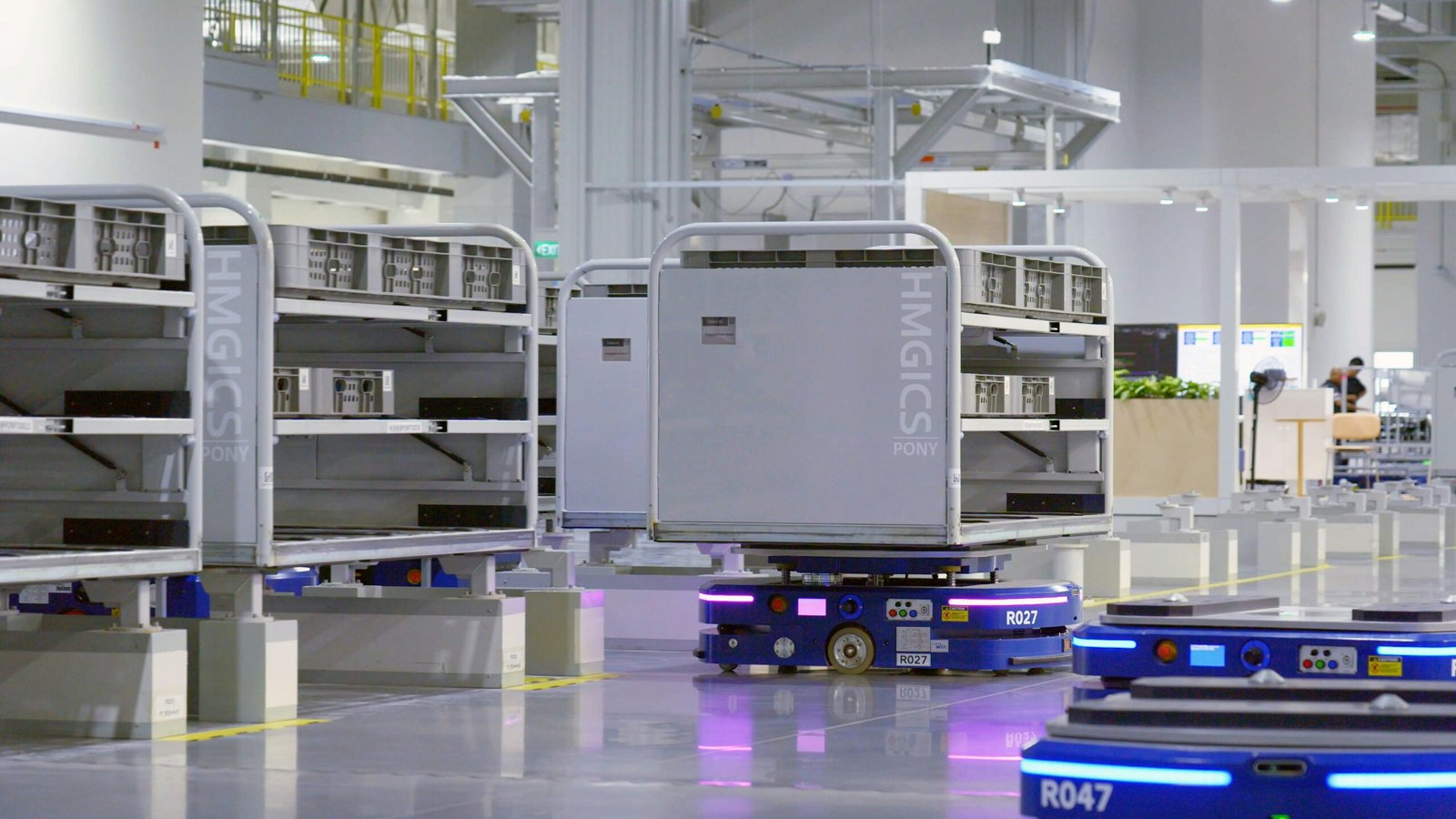
Introduction to Deep Learning
Deep learning is a transformative subset of machine learning, characterized by its use of artificial neural networks to learn from vast amounts of structured and unstructured data. This sophisticated technology mimics the human brain’s neuron connectivity, allowing systems to improve their accuracy and functionality over time without explicit programming for each task. Its emergence and growth have been framed as a revolution in the field of artificial intelligence (AI) and data science, reshaping how researchers and industry professionals approach complex data-driven problems.
The historical development of deep learning can be traced back to the early days of AI research in the 1950s. Initially, neural networks faced significant challenges, including limited computational power and insufficient data availability, which hindered their effectiveness. However, the advent of more powerful GPUs and the explosion of big data in the 21st century provided the necessary foundation for deep learning to thrive. Researchers such as Geoffrey Hinton, Yann LeCun, and Yoshua Bengio made tremendous strides in deep learning algorithms, significantly contributing to the resurgence of interest in this domain.
Today, deep learning is a vital component in various applications, from image and speech recognition to natural language processing and autonomous vehicles. Its ability to process and analyze large datasets facilitates advancements in technology and provides solutions to previously insurmountable challenges. Additionally, deep learning has vastly improved predictive analytics in fields such as healthcare, finance, and marketing, demonstrating its potential to revolutionize not only AI but also data science at large.
This paradigm shift in AI signifies an evolution from traditional machine learning techniques, which often rely on feature engineering and data preprocessing, to an approach where algorithms autonomously identify patterns and representations. As deep learning continues to evolve and adapt, it holds the promise of unlocking new levels of innovation and insight, cementing its status as a game-changer in the realm of artificial intelligence.
How Deep Learning Works
Deep learning is a subset of machine learning that exploits neural networks with multiple layers—hence the term “deep.” These layers consist of interconnected nodes known as neurons, each of which mimics the functioning of a human brain cell. Each neuron receives input, processes it through a mathematical function, and transmits the output to the next layer of neurons. This multi-layer architecture enables the model to learn complex patterns and representations from data, which is invaluable in various applications, from image recognition to natural language processing.
The operation of deep learning models can be broken down into several key components: layers, neurons, activation functions, and the backpropagation algorithm. The layers usually consist of an input layer, several hidden layers, and an output layer. The input layer receives the data to be processed, while the hidden layers progressively extract higher-level features. The output layer presents the final prediction or classification result.
Activation functions play a crucial role in determining the neuron’s output based on its inputs. Common activation functions, such as ReLU (Rectified Linear Unit) and Sigmoid, introduce non-linearities into the model, allowing it to handle complex data structures more effectively. The choice of activation function can significantly influence the learning capability of the neural network.
At the core of training a deep learning model is the backpropagation algorithm. This algorithm computes the gradient of the loss function concerning each weight by applying the chain rule, essentially calculating how changes in the weights affect the error of the model’s predictions. The optimizer, such as Stochastic Gradient Descent or Adam, then uses these gradients to adjust the weights, minimizing the error over successive iterations. This iterative process continues until the model performance converges, often demonstrating how deep learning is revolutionizing AI and data science.
The Role of Big Data in Deep Learning
Big data plays a pivotal role in the domain of deep learning, acting as a fundamental component in the training and refinement of machine learning models. Deep learning algorithms, characterized by their ability to learn and model complex patterns using neural networks, require extensive datasets to function effectively. The advent of big data has revolutionized AI and data science, enabling these algorithms to achieve remarkable accuracy and performance levels. The synergy between big data and deep learning facilitates the extraction of valuable insights from vast amounts of information, leading to improved decision-making processes across various industries.
The sheer volume, variety, and velocity of data generated in contemporary society have significantly contributed to the advancement of deep learning techniques. As businesses and organizations accumulate massive datasets from numerous sources—ranging from social media interactions to sensor inputs—they possess the necessary information to train deep learning models in a way that was previously unattainable. This influx of data not only enhances the models’ predictive capabilities but also allows for continuous learning and adaptation, further driving the innovation of AI technologies.
Industries such as healthcare, finance, and autonomous driving are at the forefront of leveraging the synergy between big data and deep learning. In healthcare, large-scale electronic medical records enable deep learning algorithms to identify trends and predict patient outcomes more accurately. Similarly, in finance, the integration of real-time transaction data aids in fraud detection and risk assessment through sophisticated neural network models. In the realm of autonomous vehicles, big data gathered from sensors and cameras is utilized to train deep learning systems that enhance navigation and safety features. Through these examples, it becomes evident that the relationship between big data and deep learning is not only symbiotic but essential for pushing the boundaries of what’s achievable in AI and data science today.
Applications of Deep Learning in AI
Deep learning has emerged as a pivotal technology in the broader field of artificial intelligence (AI), empowering a broad spectrum of applications that were previously constrained by traditional machine learning methods. One key area where deep learning has made profound advancements is natural language processing (NLP). By leveraging neural networks, particularly recurrent neural networks (RNNs) and transformer architectures, AI systems can now understand, interpret, and generate human language with remarkable accuracy. Applications such as chatbots, sentiment analysis, and language translation services exemplify the transformative impact that deep learning brings to NLP.
Another significant application lies within computer vision, where deep learning algorithms are employed to analyze and interpret visual data from the world. Convolutional neural networks (CNNs) have become the backbone of various computer vision tasks, enabling systems to effectively classify images, recognize objects, and even understand scenes. Real-world applications include facial recognition systems utilized by security agencies and automated inspection in manufacturing processes, demonstrating how deep learning has revolutionized visual perception for machines.
Moreover, the realm of speech recognition has also been significantly enhanced through the utilization of deep learning techniques. AI systems, bolstered by recurrent neural networks (RNNs) and end-to-end architectures, have achieved unprecedented levels of performance in accurately transcribing spoken language into written text. Virtual assistants, such as Siri and Alexa, as well as transcription services, illustrate how deep learning has reshaped our interactions with technology and facilitated the seamless integration of voice commands into various platforms.
In addition to NLP, computer vision, and speech recognition, deep learning’s capabilities extend to fields such as autonomous driving, medical diagnosis, and robotics. By continually expanding the scope of AI applications, deep learning is proving to be a cornerstone of progress in data science, facilitating innovations that are reshaping industries and enhancing everyday life.
Deep Learning Tools and Frameworks
Deep learning has emerged as a transformative force in the fields of artificial intelligence (AI) and data science, largely due to the development of specialized tools and frameworks that simplify the process of model creation, training, and deployment. Among the most widely used frameworks are TensorFlow, PyTorch, and Keras, each offering distinct features that cater to the varying needs of developers and researchers.
TensorFlow, developed by Google, stands out for its comprehensive ecosystem that supports robust model deployment, including TensorFlow Lite for mobile applications and TensorFlow Serving for production environments. Its flexibility allows for various architectures, making it suitable for both beginners and seasoned professionals. TensorFlow’s extensive community support and documentation further enhance its usability, providing a myriad of resources for troubleshooting and learning.
On the other hand, PyTorch, developed by Facebook’s AI Research lab, has gained popularity for its dynamic computation graph, which facilitates real-time changes to the model. This feature is particularly advantageous for researchers conducting experiments in deep learning, as it allows for a more intuitive coding process. PyTorch’s integration with Python coding language also makes it an appealing choice for those within the data science community. Its growing adoption in academia has created a plethora of educational resources that contribute to its ease of use.
Keras, originally a standalone library, is now tightly integrated with TensorFlow as its high-level API. Keras is designed to promote fast prototyping and simplicity, making it an excellent starting point for newcomers to deep learning. Its user-friendly interface allows developers to build complex neural networks with minimal code, thus revolutionizing how individuals engage with AI and data science methodologies.
In conclusion, the landscape of deep learning tools and frameworks is continually evolving, providing enhanced capabilities for developers. TensorFlow, PyTorch, and Keras offer unique advantages that cater to different aspects of deep learning, ultimately fostering innovation in the field of AI and data science.
Challenges and Limitations of Deep Learning
Deep learning has emerged as a cornerstone of artificial intelligence (AI) and data science, offering remarkable capabilities across various applications. However, despite its transformative potential, this innovation is not without its challenges and limitations. A primary concern is the requirement for large amounts of data. Deep learning models typically thrive on vast datasets to identify patterns and make accurate predictions. In scenarios where data is scarce or difficult to obtain, training these models effectively becomes a daunting task, often resulting in suboptimal performance.
Another significant issue is overfitting, which occurs when a model learns the noise within the training data rather than the underlying signal. This can lead to models that perform exceptionally well on training datasets but falter when applied to unseen data. Techniques such as regularization and dropout are employed to mitigate this risk, but the delicate balance between model complexity and generalization capabilities remains a persistent challenge in deep learning.
Furthermore, interpretability of deep learning models poses a major hurdle. As these models tend to function as “black boxes,” understanding the rationale behind their predictions can be exceedingly complex. This lack of transparency raises concerns, particularly in fields such as healthcare, finance, and autonomous driving, where decision-making can have critical consequences. Researchers are thus working on methods to enhance interpretability without sacrificing performance, but this area still requires significant advancements.
Lastly, the computational costs associated with training deep learning models are considerable. The process often demands extensive computational resources and time, necessitating high-performance hardware and efficient algorithms. Such requirements can be prohibitive for smaller organizations or individual practitioners, restricting broader access to these transformative technologies. A critical understanding of these challenges is essential for navigating the future landscape of deep learning and AI applications.
Future Trends in Deep Learning
The landscape of deep learning is continuously evolving, paving the way for significant advancements in artificial intelligence (AI) and data science. One emerging trend is the acceleration of unsupervised learning techniques. As the demand for large labeled datasets grows, the ability of deep learning models to derive insights from unstructured and unlabeled data will become increasingly valuable. By utilizing clustering, dimensionality reduction, and generative models, researchers aim to refine these unsupervised methods to harness the wealth of data available in today’s digital world without necessitating exhaustive labeling efforts.
Furthermore, the integration of deep learning with other AI methodologies is expected to foster groundbreaking developments. Combining deep learning with reinforcement learning can enhance model capabilities in decision-making processes, while the incorporation of symbolic AI may improve interpretability and transparency of deep learning systems. These hybrid approaches could lead to more robust models capable of tackling complex tasks across various domains, from healthcare to autonomous vehicles, thereby significantly broadening AI applications.
Also, the societal impact of deep learning cannot be overlooked. As it becomes more deeply embedded in everyday tools and technologies, considerations around ethics and responsible AI usage are increasingly important. Researchers and policymakers must work collaboratively to develop guidelines that address potential biases, privacy concerns, and the implications of automation on employment. By establishing a framework that promotes equitable access to deep learning technology, society can maximize the benefits while mitigating risks.
As we look ahead, advancements in hardware, such as quantum computing, may offer another breakthrough for deep learning, enabling faster processing and deeper networks. The synergy of these technologies holds the promise of revolutionizing AI, further solidifying deep learning’s role as a cornerstone of data science.
Case Studies: Success Stories in Deep Learning
Deep learning has emerged as a transformative force in various industries, with numerous case studies highlighting its successful implementation. One prominent example is in the healthcare sector, where deep learning algorithms are being utilized for diagnostic purposes. A notable case is the deployment of convolutional neural networks (CNNs) by researchers at Stanford University. Their technology achieved an accuracy rate comparable to that of expert radiologists in identifying pneumonia from chest X-rays. This advancement not only reduces the workload of medical professionals but also ensures quicker diagnosis and treatment for patients.
In the realm of finance, deep learning is revolutionizing risk management and fraud detection. Companies like JPMorgan Chase have employed deep learning models to analyze transaction patterns and identify fraudulent activities in real-time. By leveraging large datasets, these models can learn and adapt to new patterns of behavior, significantly improving the accuracy of fraud detection systems and minimizing financial losses. Implementing such advanced data science techniques has proven beneficial, allowing financial institutions to enhance security measures more effectively than traditional methods.
The retail industry is another arena where deep learning has made significant strides. For instance, Amazon utilizes deep learning algorithms for its recommendation system. By analyzing user data and purchasing behavior, the platform offers personalized product suggestions, thereby boosting sales and enhancing customer satisfaction. This case underscores how deep learning facilitates improved user experiences by tailoring business strategies to individual preferences, resulting in increased customer loyalty and higher conversion rates.
These examples illustrate how deep learning is revolutionizing AI applications across various sectors, providing competitive advantages and transforming operations. By overcoming challenges and integrating sophisticated algorithms, businesses are harnessing the power of deep learning to drive innovation and achieve significant benefits. As this technology continues to evolve, its applications will undoubtedly expand, further contributing to advancements in data science and AI integration.
Conclusion and Final Thoughts
In the rapidly evolving landscape of technology, deep learning has emerged as a pivotal component, revolutionizing AI and data science. Throughout this discussion, we have explored the fundamental aspects of deep learning, including its architecture, applications, and the profound impact it has had across various industries. By simulating human-like cognitive functions, deep learning systems have significantly enhanced the capabilities of AI, enabling it to analyze vast amounts of data with unparalleled accuracy.
Moreover, the utilization of deep learning frameworks has streamlined the process of extracting actionable insights from complex datasets. This has been instrumental not only in improving operational efficiencies but also in fostering innovation. From healthcare to finance, and even in creative fields, the ability of deep learning algorithms to recognize patterns and make predictions has opened new doors for research and practical applications. Acknowledging that such technology can bolster decision-making processes, organizations are increasingly investing in data science tools that incorporate deep learning techniques.
As we reflect on the implications of this technology, it becomes evident that deep learning is more than just a trend; it represents a significant shift in how we understand and leverage data. The opportunity for professionals across diverse domains to harness deep learning is immense. Whether one is involved in developing AI strategies or analyzing data, embracing deep learning can lead to more informed, data-driven decisions. As we move forward, it is essential for both individuals and organizations to remain adaptable and proactive in integrating these powerful tools into their workflows, thereby ensuring they remain at the forefront of this technological revolution.
- Name: Mohit Anand
- Phone Number: +91-9835131568(Sumit Singh)
- Email ID: teamemancipation@gmail.com
- Our Platforms:
- Digilearn Cloud
- EEPL Test
- Live Emancipation
- Follow Us on Social Media:
- Instagram – EEPL Classroom
- Facebook – EEPL Classroom
- Go back to google
Internal links
- Building Your First Python Project: A Step-by-Step Guide
- Python vs. Other Languages: Why It’s the Best Choice for Beginners
- Artificial Intelligence in the Future: Trends, Challenges & Opportunities
- Transforming Healthcare with AI: Faster Diagnosis and Better Treatment
- The Future of AI in Business: Smarter, Faster, Better
- The Truth About AI Ethics: Challenges, Risks, and Real Solutions
- The Future of AI and Data Science: Smarter, Faster, Better
- ML vs. DL: Exploring Their Unique Roles in AI





